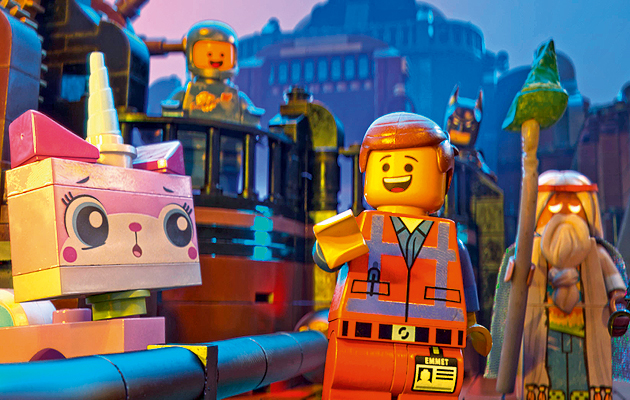|
Emmet, a humble construction worker – and prophesied “special one” (Image: Warner Bros/The Kobal Collection) |
||
|
Charles Holland enjoys a witty take on the eternal Lego question – is it better to ignore the instructions? There is a pervasive cliche that the desire to be an architect starts with Lego; the megalomaniacal urge to design buildings and plan cities is nurtured during a childhood obsession with sticking plastic bricks together. Lego has exploited this relationship recently by developing a range of models of architectural masterpieces, including Fallingwater and the Villa Savoye. The Lego Movie, however, is a far funnier and sharper conflation of childhood fantasy and adult wish fulfilment. There is an explicit design subtext to the film as well as a plot that revolves around ideas of creativity and control. The splendidly named President Business owns everything in Lego world. He has a neurotic fear of disorder and hates the way that some Lego people – the Master-Builders – keep reassembling all the bits. His evil plan is to glue the pieces together once and for all and banish the free thinking Master-Builders to Cloud Cuckoo Land; the remaining Lego population are unimaginative drones, able only to follow the instructions. There is also a Life of Brian-style conceit to the story. Vitruvius, the God-like leader of the Master-Builders, issues a prophecy that a “special one” will come to prevent Lord Business’s plan. This prophecy is fulfilled by a cheerful and thoroughly unexceptional construction worker called Emmet. Challenged by the Master-Builders to show his creativity, Emmet can only come up with the “double-decker couch”, a sofa on top of another sofa, ridiculed for its lack of design flair. The film offers an extremely funny and striking internal critique of Lego’s own marketing strategy. As the toy has moved away from generic building blocks towards ever more complex modelling and franchise tie-ins, it has become arguably less creative as a result. Like the enslaved Lego people in the movie, it has become ever more dependent on instructions. This is the movie’s central joke, one that conflates the desire to follow instructions with a dystopian future of enslavement. The movie’s theme song – Everything is Awesome – captures this vacuous celebration of uncritical behaviour. That a branded movie developed to sell plastic toys could also proffer a critique of the idiocy of consumer culture is quite an irony, and suggests that Lego itself is either too blasé or too confident to care. As an animation of otherwise inanimate objects, the film belongs in the same tradition as Toy Story. As with Pixar’s masterpiece, much of The Lego Movie’s humour and pathos comes from the way that, while the Lego characters are allowed to acquire a personality and do amazing things, they also have to remain emphatically pieces of Lego. These limitations include the way characters move, the things they can and can’t do, as well as what you might call the underlying logic of the Lego universe. This means that they conform to the cliches of the particular Lego world that they come from – medieval castle, space station, construction site etc. Lego people always stay in character, and the film plays cleverly on the comic tension between them, mining the surreal humour of a pirate having a conversation with Batman. The sophisticated computer animation helps in this, capturing the crude movements of Lego people – the way, for instance, that you need to stick them to the floor in order for them to stand up – as well as the texture of the plastic, and even the way that pieces age. Their mostly useless, claw-like hands figure in a particularly good joke based on Michelangelo’s fresco The Creation of Adam. Towards the end, the film takes a disorientating turn into mawkishness when President Business is revealed as a representation of adult control-freakery. Despite the jolt into Serious Point Making, the moment reveals the way in which toys act as the starting point for narrative for both adults and children. Toys are representations, models on to which we project fantasies of alternative worlds, both utopian and constrained. Despite The Lego Movie’s conclusions, in my experience it is children who are the inflexible utopians, determined that everything should be just so. They may well of course grow up to be frustrated pragmatists. Or architects. The Lego Movie directed by Phil Lord and Christopher Miller |
Words Charles Holland |
|
|
||
|
President Business wields his glue gun to fix Lego pieces in place for ever |
||


















